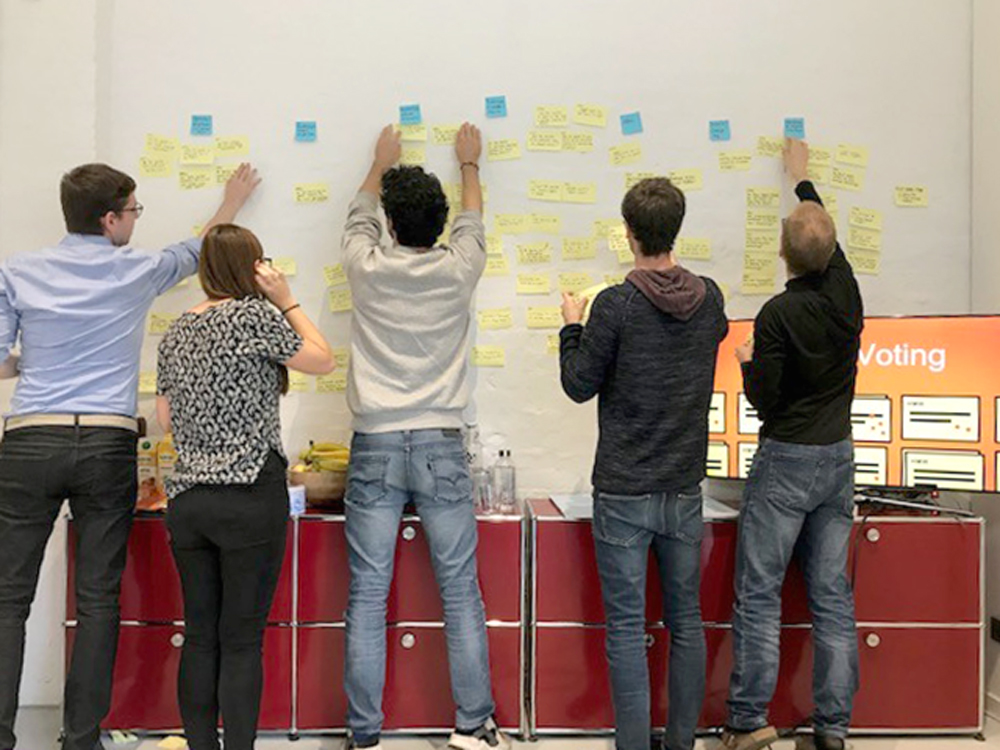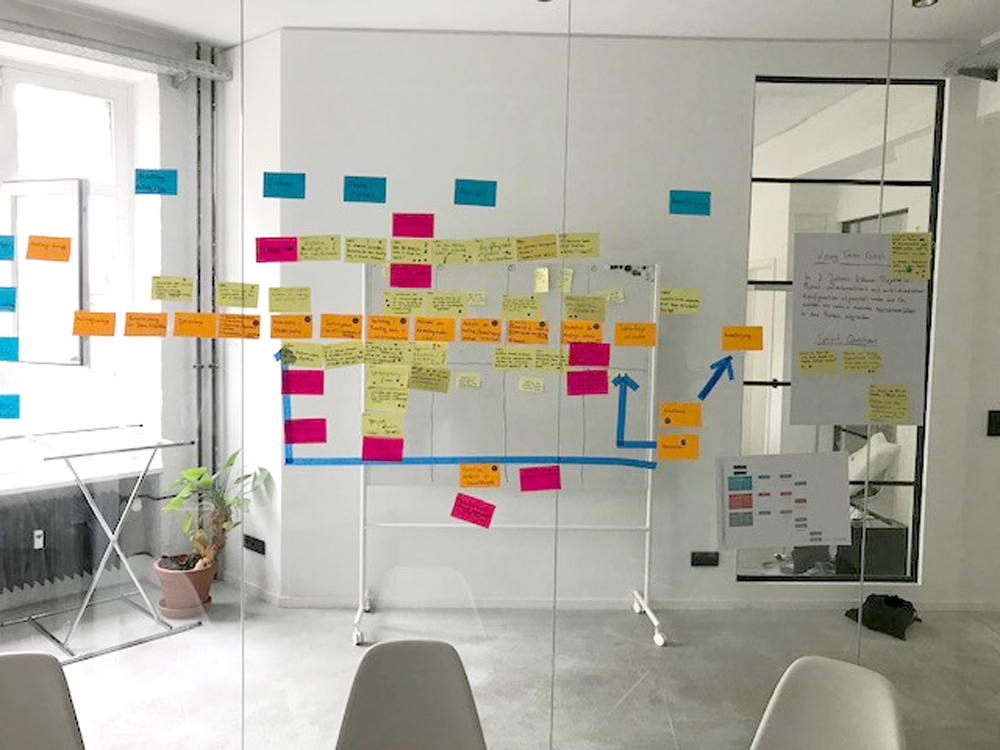The origin of the current Plunet 8.0 release is extraordinary in many ways. One of the main reasons for this is that many of the numerous new features were devised in cooperation with our users. We would like to give you an exclusive insight into our work processes and show you how we proceed from the first idea to the implementation of a new feature. So we asked our UX researcher Jesús, who helped to develop the user research department at Plunet, about the research strategy for the current release.
How long does the user research department at Plunet exist and what was the motivation to establish it?
As a UX researcher, I am part of the user experience and design team, where I work very closely with the other UX designers and with the product management team. At Plunet, we wanted to involve our users more in our product development, from the early conception stage to the end of the process, and make sure that we listen to all types of customers. We wanted to provide a firm basis for our user research practices and make them a norm for each project that we carry out. In the summer of 2019, we started with the user research practices. Since then, I have been taking care of organizing and moderating the sessions with our users, analyzing the collected information and processing it, so that product managers and designers can make well-founded decisions.
What methods or tools does the department use to conduct the user research?
We focus a lot on qualitative studies, which include direct sessions with our users. These can be one-to-one interviews where users show us step by step the way they work with Plunet or creative exercises that help the interviewed person to reflect and give us their feedback on specific topics.
Prototype testing is also a common activity and probably the one that participants enjoy the most. For participants, it’s a chance to test new ideas that might be considered for future releases. We get feedback on how to improve the ideas before we invest time and resources in developing them.
We also send out surveys, which usually take only a few minutes for the respondents to complete. For us, these short surveys are crucial, they provide us with very valuable information. With this information, we evaluate which areas of Plunet we want to focus our attention on and how we can improve them. Furthermore, it help us to validate if what we learn in our interviews applies to a sufficient number of customers or can be used as a basis for more in-depth interviews or for usability testing.
How did the decision come about to involve users right from the start for the current 8.0 release?
The 8.0 release means a very big change for a core area of Plunet and it’s a step towards the greater automation we want to establish in the near future. Until Plunet 7.4, the options to select vendors and search for them were broadly diversified, offering users the possibility to work with Plunet in many different ways. For us it was important to talk to users extensively at the beginning of the project to understand how different types of organizations and users work with the job assignment area, which needs they have, and what kind of solutions we could provide to meet their needs.
It was also extremely important to validate our ideas before starting the development. That’s why we conducted a lot of usability testing sessions during the project. Many customers tried our prototypes and the feedback they gave us during the sessions influenced the way we built the new vendor search area.
Please describe the approach for the current Plunet release. Which different phases did you go through?

The project consisted of several cycles and it started with the discovery phase. During the discovery phase, we ran many interviews and distributed surveys. We focused on learning about how users currently work with Plunet, spotting problems, and the respective context of each problem.
With the collected information, different product teams entered the idea development phase where we built our prototypes. Then we tested the prototypes in usability testing sessions with several users. We found out if our ideas worked and where they should be improved.
Then we repeated the cycle and started all over again with the discovery phase. That led to more ideas that have been tested by users before our development team started to build them.
Did you focus on specific topics? If so, which ones?
While we concentrated on the core functionality of the vendor search and the job assignment in the first cycle, the second cycle was centered on the calendar with the vendor’s availabilities and capacities.
We focused on building a system that is capable of automating the process of job assignment and vendor search and is at the same time very transparent when it comes to the decisions and steps executed by the system. The user is able to monitor the process and can decide if and to what extent they want to intervene manually or if they let the automated process continue.
For us, it was very important to understand which level of automation our customers are applying and to what extent they want to increase it. Moreover, we wanted to know where automation reaches its limits, when steps must be done manually, and what characteristics Plunet has to provide so that the user trusts the system on executing decisions that before were done manually.
What were the main obstacles for this release?
At the beginning, recruiting participants for the user research activities was very time-consuming. As a result, we set up our User Research Community with a corresponding landing page, where users find all relevant information and can join the group.
We have all gone through a learning process, since it was the first time that we were implementing this approach for a release. For the next time, we will make use of our learnings to improve the process towards more efficiency.
Were there aspects or events that you were particularly satisfied about during the research process?
We found out that customers were demanding a system that can support quality requirements in users’ decisions and automate them at the same time. In this way, the user executes fewer administrative tasks and monitors the course of the work processes, stepping in only if needed. This automation frees time for project managers that they can dedicate to more valuable tasks, such as fostering customer and vendor relationships. This is a core research finding that is independent of our concept for the new job assignment area.
Many users were happy that we interviewed them and that we wanted to learn from their way of working by asking about their problems. They were very happy to share their knowledge.
What’s more, most of the participants in the usability tests were super excited to see the new functionalities that were about to come and to have the chance to shape them by providing feedback.
During the testing sessions, we found out that they liked the fact that everything was taking place in the job assignment area, within the job overlay, and that we were providing much more clarity to the process.
What insights have you been able to gather?

We discovered that sometimes assigning jobs can be very time-consuming and a repetitive task. This is the case for users who work with many language combinations in one single project and also when vendors are suddenly very busy or absent. These situations can lead to a lot of stress for project managers, especially if the project has a very tight deadline.
Another interesting insight was finding out that there are many different ways project managers can build a personal relationship with their vendors. Some project managers really like to send a personal message to their vendors when preparing the assignment or job request e-mail, others prefer to send automated e-mails but contact them once a week, and others call them or chat constantly with them.
To what extent have your findings ultimately influenced the development of the current release?
This current release wouldn’t have been possible without user research. What users are seeing now in Plunet 8.0 results from the learnings we have gained from and validating our ideas with them. Without all this research, we would have built a new job assignment functionality full of assumptions and couldn’t be sure if they really apply. Of course we couldn’t validate all of our hypotheses 100 percent during the project, but we were able to do it with the most important ones for us.
Will your work process or methodology be similar or different for the next release?
It’s the first release where we’ve conducted this kind of user research and we have of course found many aspects that could be improved. This first experience has helped us to learn and we will refine our methodologies and be able to conduct our user research activities in a more efficient way in the future.
What’s sure is that the iterative process that we implement for our software development has become an important part of our internal methodologies.